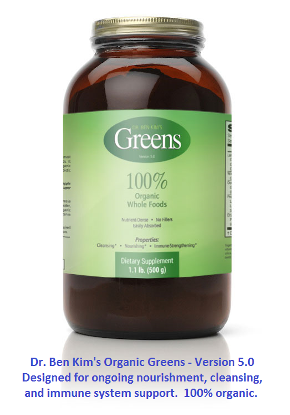You are here
Everyday Noises that Can Cause Hearing Loss and Tools to Protect Your Hearing
It's estimated that 10 million Americans suffer with noise-induced hearing loss. In fact, noise is one of the most common occupational hazards today, with as many as 30 million Americans being exposed to harmful noise levels at work.
We register sound through little hairs that vibrate in our inner ears in response to different noises. When these hairs are exposed to a sudden burst of very loud noise or to a steady stream of fairly loud noise, they can get damaged, resulting in hearing loss.
Sound pressure is measured in decibels (dB). Here are some everyday sounds and their average decibel rankings:
| Sound |
Decibels (db)
|
| Very faint, rustling leaves |
5
|
| Whisper |
20
|
| Rainfall |
50
|
| Typical speech |
60
|
| Washing machine |
75
|
| Busy city traffic |
85
|
| Hair dryer |
90
|
| Leaf blower, rock concert, chainsaw |
110
|
| Ambulance, jack hammer |
120
|
| Jet plane from 100 feet |
130
|
| Fireworks, gunshot |
140
|
| 12-gauge shotgun |
165
|
How loud is too loud?
Steady exposure to noise that reaches 85 dB can produce hearing loss. A one-time exposure to very loud noises like a gunshot at 140 dB can also cause hearing loss. Listening to music with earphones on an iPhone at a standard volume level of 5 for 15 minutes a day is enough to cause permanent damage. The volume at most movie theaters and the level of amplification used by many contemporary praise worship teams at church are at damage-inducing levels.
Since it's not practical to walk around with a meter that allows you to measure dB, a good rule of thumb is that if you have to raise your voice in order to be heard by a person who is a couple of feet away, the noise level is considered hazardous.
Another practical measure is to carefully observe for ringing in your ears or if sounds are flat or dull after leaving a noisy environment. If either of these conditions are present, you were probably exposed to a hazardous level of noise.
If you want to objectively measure the number of decibels of noise you are subjecting your inner ears to in various settings, you can use a simple decibel meter like the one found here:
We keep ear plugs in a kitchen cupboard right by our blender. Since we blend up smoothies and soups almost every day, we're pretty disciplined in plugging our ears and having our boys hold their hands to their ears whenever we blend.
If you are regularly around harmful noises at work or home, I recommend that you strongly consider using expandable or pre-molded earplugs. You can find them at almost any pharmacy. Here is a brand that I like at Amazon:
Hearos Ultimate Softness Series Foam Earplugs
An alternative is to use hearing protection earmuffs - two that I can recommend can be found at the following pages:
Honeywell Folding Hearing Protection Earmuffs
Kids Hearing Protection Earmuffs
Or if you don't like the feeling of earmuffs on your head, you can use the following:
Honeywell Hearing Protection Band
If you have children and other family members who like to listen to music on their phones or in their cars, please share this information with them so that they're aware of how their choices today may affect them in the future.
For more information on noise-induced hearing loss and what you can do to prevent it, please visit the website for the National Institute for Occupational Safety and Health.
Join more than 80,000 readers worldwide who receive Dr. Ben Kim's free newsletter
Receive simple suggestions to measurably improve your health and mobility, plus alerts on specials and giveaways at our catalogue
Please Rate This
Highest RatedNo articles have been rated for usefulness recently, please check later. | Related Posts | ||











Comments
Hearing loss
I have serious hearing loss from birth. So in order for me to hear things, loudness is necessary for me. Still I will use some of your suggestions where possible.
Hearing Loss and loud noises
Good article. Many organizations don't realize how impactful their volume choices are to listeners. I lost most of my hearing at 6 months of age, and now have cochlear implants. There are situations I avoid now because of the loudness, including church. The environment should be conducive to spiritual enjoyment, not noisy cacophony. I love good music and singing, but not when I get a massive headache from the volume! Don't tell me to take my processors off, as that defeats the purpose of my being there!
What I realized at church/hearing
As a school nurse I screen students for hearing and am amazed that their lower level sounds have already been affected by loud noises and base music. I am constantly telling them if your parents can hear the music with your head sets you have it too loud. Thank you for talking about this issue and great suggestions.
Tinnitus too
hearing loss isn't the only thing that accrues from loud noise. Tinnitus, ringing in the ear, comes too, and in many cases it is PERMANENT. People who have bad cases of it say it is much worse than hearing loss. They would rather be deaf than have this constant ringing. It's tragic. Dr. Kim, you speak of blenders. I love my Blendtec blender because it starts soft and TURNS OFF BY ITSELF. So I don't need hearing protection with it. I keep it in another room besides my kitchen, and I turn it on. By the time it gets loud I'm already out of that room with the door closed behind me. Then I go back and get my smoothy, and I find the results as good as or better than the Vitamix.
I got permanent tinnitus from ONE loud blast of an M80, the kind kids set off on the fourth of July. Be forewarned!
hearing loss
I enjoy going to the movies, but sometimes the previews can be SO loud. I always carry earplugs in my purse, so I can slip them in if it looks and sounds like the previews will feature off the charts loudness.
There are free apps available
There are free apps available that make your smartphone behave like a decibel meter.
church music
drbenkim--
I so appreciate the spirit about you. You'd do even better for your spirit (and ears) to listen to this kind of wonderful music: https://www.mormonchannel.org/radio/music-247